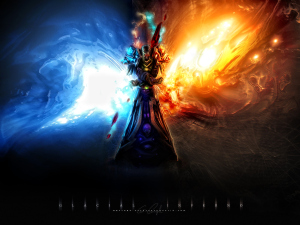First and most critical to understanding the nature simulacra is understanding the purpose of the term as a definition.
Implicit in Baudrillard’s definition of simulacra is that the world has a definable, ultimate reality. It is upon this that Baudrillard makes comparison, and this which he believes to be the root of a developing problem in the world. With this in mind we can begin to form a solid basis on the concept of simulacra.
We begin at the real. It is the actuality and physical “truth” of the world. From the reality we can create representations. These are inherent in the concepts of language and even our ability to understand the world. By abstracting the real we can form categories for understanding the world and using these representations and symbols of real objects we can communicate knowledge. However, this abstraction can be extended. Because we do often rely so heavily on the creation and use of these representations and symbols, Baudrillard argues that we can begin to move away from the real.
Here enters the definition of a simulacra, a copy with no original. It is not a representation (which may hide the truth) or a symbol (which might hint at the truth). It is a thing which itself has no meaning which we use to convince ourselves of meaning, and even to define our reality. The example of Disney Land is used because it creates a context in which an adult can behave like a child. The “real” world requires that adults conform to social norms and ideas of propriety and maturity. However, in the simulacrum of reality that exists in the space of Disney Land an adult can change the “real” world for a lie in which childish behavior is allowed. Indeed this can be taken further, Through simulacra we redefine reality to conform to the space of representation and symbols.
From this then, we can understand that defining something as a simulacra enables us to state that it intends to create a context in which “true reality” can be supplanted by another, false, reality.
The problem with this definition, however, is that it relies on a true and agreed upon reality of the world. As seen in movies like the Matrix, our “real” world could itself be a simulacra- which we have been deceived into believing is real. Further, it claims that these “false” realities do not have a real affects on the people involved. As exhibited by the betrayal in the Matrix, because reality is defined by perception (and the perceptions of others), the false reality can be important enough for people to consider them as real or more real than real. While Baudrillard argues this concept of hyperrealiism to be the central flaw in the simulacra, I think it forms a potent argument as to the importance of these contexts- whether they are “truly” real or only real in our minds.
Hard mode grading
